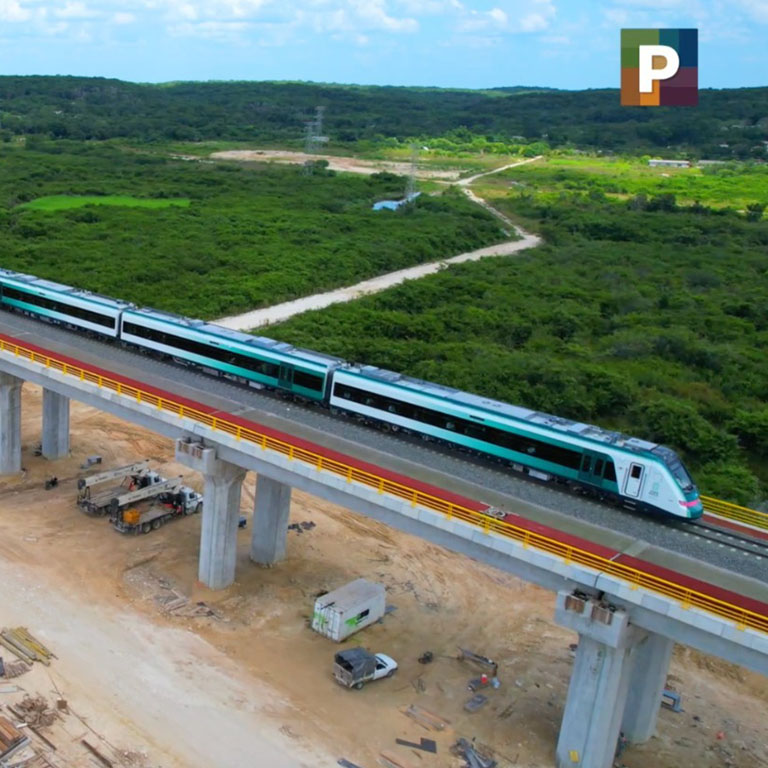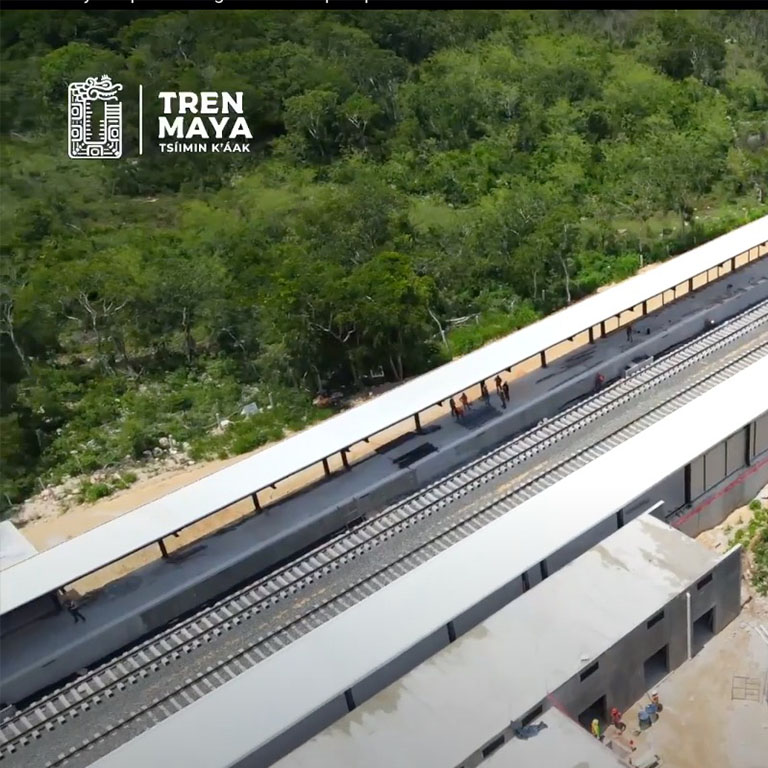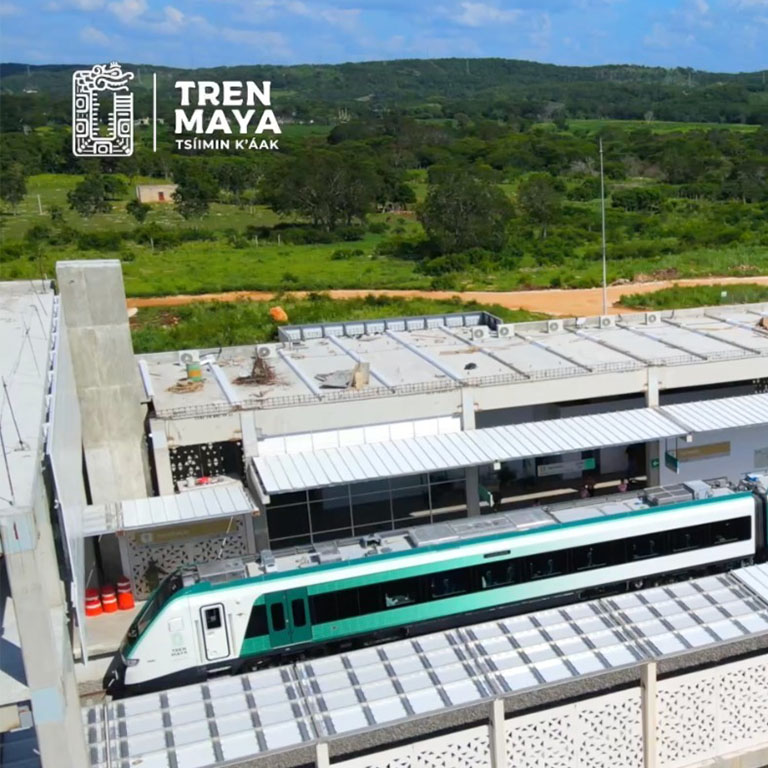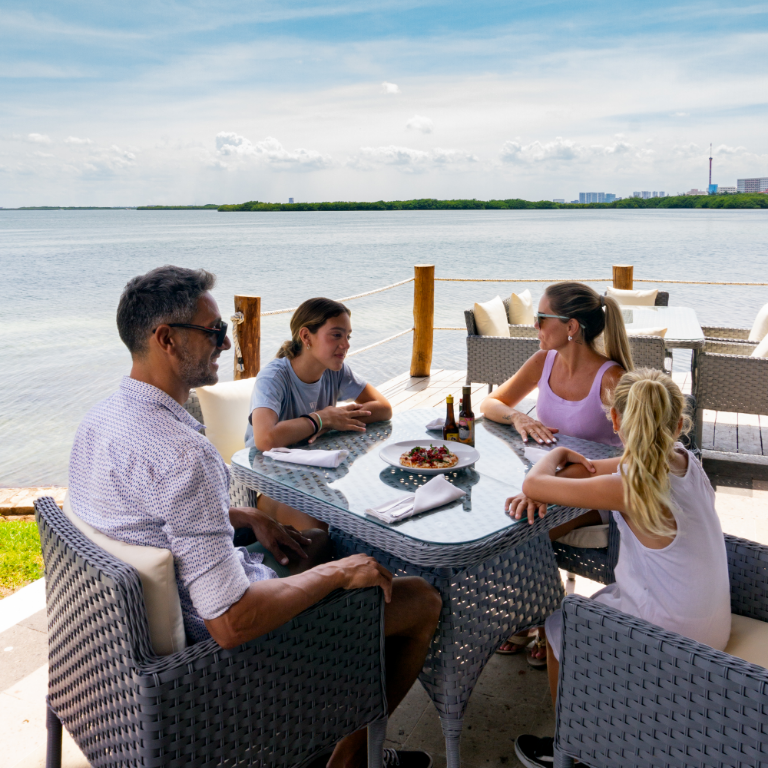What is the Route of the Mayan Train?
December 15 marked a milestone in Mexico’s modern history with the inauguration of the Mayan Train, an approximately 1,500-kilometer (over 900 miles) railway project that will revolutionize transportation and tourism in the southeast of the country. Designed to connect various regions, promoting mobility, economic and cultural inclusion, the train in its first stage already connects Campeche with Cancun. This project is emerging as a symbol of innovation and pride for Mexico, offering access to a region rich in cultural and natural heritage.

We present the complete route of the Mayan Train:
| Section 1: Palenque – Escárcega | Section 2: Escárcega – Calkiní |
| Distance: Approximately 142 miles. Stations: Palenque (Chiapas), Boca del Cerro (Tabasco), Tenosique (Tabasco), El Triunfo, Candelaria, Escárcega (Campeche). Stops: Tenosique (Tabasco), Candelaria (Campeche). | Distance: Approximately 146 miles. Stations: Escárcega (Campeche), Carrillo Puerto, Edzná (Campeche), San Francisco de Campeche (Campeche). Stops: Carrillo Puerto (Campeche), Tenabo (Campeche), Hecelchakán (Campeche), Calkiní (Campeche). |
| Section 3: Calkiní – Izamal | Section 4: Izamal – Cancun |
| Distance: Approximately 107 miles. Stations: Mérida Airport (Yucatán), Teya (Yucatán), Izamal (Yucatán). Stops: Maxcanú (Yucatán), Tixkokob (Yucatán). | Distance: Approximately 160 miles. Stations: Chichén Itzá (Yucatán), Valladolid (Yucatán), Nuevo Xcán (Quintana Roo). Stops: Xibalbá (Yucatán), Leona Vicario (Yucatán). |
| Section 5 North: Cancun – Playa del Carmen | Section 5 South: Playa del Carmen – Tulum |
| Distance: Approximately 31 miles. Stations: Cancun Airport (Quintana Roo), Puerto Morelos (Quintana Roo), Playa del Carmen (Quintana Roo). | Distance: Approximately 37 miles. Stations: Tulum (Quintana Roo), Tulum Airport (Quintana Roo). Stops: Xcaret (Quintana Roo), Puerto Aventuras (Quintana Roo), Akumal (Quintana Roo). |
| Section 6: Tulum – Bacalar | Section 7: Bacalar – Escárcega |
| Distance: Approximately 158 miles. Stations: Felipe Carrillo Puerto (Quintana Roo), Bacalar (Quintana Roo), Chetumal (Quintana Roo). Stops: Limones (Othón P. Blanco, Quintana Roo). | Distance: Approximately 178 miles. Stations: Xpujil (Campeche). Stops: Conhuas (Campeche), Centenario (Campeche). |
The stations and stops mentioned here may vary due to operational reasons.
What will be the costs and transportation times?
The Mayan Train, until now, offers two classes for its passengers: Tourist and Premier. Each of these classes provides different levels of comfort and services, adapting to the needs and expectations of a wide range of travelers
| For longer trips: | For intermediate routes: |
|---|---|
| San Francisco Campeche – Cancun: Economy Class: $1,166 MXN Premier Class: $1,862 MXN Cancun – San Francisco Campeche: Economy Class: $1,166 MXN Premier Class: $1,862 MXN | San Francisco Campeche – Merida: Economy Class: $431.50 MXN Premier Class: $688.50 MXN Merida – San Francisco Campeche: Economy Class: $431.50 MXN Premier Class: $688.50 MXN Cancun – Merida: Economy Class: $735.00 MXN Premier Class: $1,173.50 MXN Merida – Cancun: Economy Class: $735.00 MXN Premier Class: $1,173.50 MXN |
Please note that prices are subject to change, and it’s advisable to check the official Mayan Train ticket sales portal for the most up-to-date information.
Source: https://trenmayaa.com/precios
When will the next section of the Mayan Train be inaugurated?
The inaugural section, which began operations on December 16, covers a total of 473 kilometers and goes from San Francisco, Campeche to Cancun International Airport. Following the deadlines established by the federal government, the section from Cancún to Palenque will be ready on December 31. Finally, the Mayan Train is expected to be fully operational starting February 29, 2024, when all sections are open.
Social and Economic Impact
UN-Habitat has generated a database with 30 indicators for 268 municipalities in Campeche, Chiapas, Tabasco, Yucatán, and Quintana Roo. This database allows us to know the situation before the construction of the Mayan Train and calculate its impact in the following years.
According to UN-Habitat projections, the Mayan Train is expected to generate almost one million new jobs in the southeastern region of Mexico. Until 2030, it is estimated that 715,000 new jobs will be created in the 16 municipalities with a train station, 150,000 jobs in the rural economy associated with the train, and 80,000 additional jobs in the construction work of the first five sections in 2020.
It is expected that the Mayan Train will especially benefit the indigenous population, since, of every 100 people with employment, 46 will be from indigenous peoples. The arrival of the train will favor the creation of jobs directly and indirectly related to the railway, which will result in a 38% increase in labor employment of the indigenous population compared to 2015 levels.
The economic impact on the areas through which the Mayan Train will pass will be significant. It is estimated that local economic growth will be double compared to the situation without the train. Without the train, a growth of 0.84 (1.5 billion pesos) is projected in the total value of the production and transformation of goods in the region. With the train, a growth of 1.59 (2.1 billion pesos) is expected.
The Mayan Train will also have a positive impact on poverty reduction in the southeast region. It is estimated that it will lift 1.1 million people out of poverty by 2030. Without the train, it is projected that there would be 7.2 million people in poverty, while, with the train, this figure will be reduced to 6.1 million.


The orderly planning associated with the Mayan Train will also contribute to the protection of the environment and the efficient consumption of land. The planning is expected to reduce land consumption by 49%, which will preserve areas free of human activities and protect the environment in the region.
Additionally, the Mayan Train will have a positive impact on education. It is expected that, in municipalities with a station, the average schooling level will increase by two years for inhabitants aged 15 years or older. This increase in the average schooling level will improve training conditions and access to the labor market, especially in the context of tourist and productive economic growth.
It is worth mentioning that this study was based on data from the INEGI (National Institute of Statistics and Geography) economic census of 2009 and 2014, as well as other sources mentioned in the document “Evaluation system of the impacts generated by the comprehensive development strategy of the southeastern region.”
Benefits to Local Communities
The Mayan Train project will have a significant social impact on local communities. The degradation, fragmentation, and deforestation of the Mayan territory associated with the construction, mobility, and development of the project will affect the Mayan communities and their relationship with the environment and natural resources. The cultural identity of these communities is rooted in their interaction with the natural environment, so the change in land use and the development vision promoted by the project represents a challenge for them. Some critics, such as Sara López, an activist from Campeche, consider that the jobs offered to Mayan communities will be cheap and servile labor, and do not see this as an opportunity.
However, the project also promises to generate economic opportunities, such as half a million jobs during construction and future jobs in new commercial and tourism developments. According to Fonatur (National Fund for the Promotion of Tourism), the construction of the train has already been a source of work and has helped keep the economy active during the pandemic. It is expected that local communities will be integrated into production chains and added value will be generated for their products.






